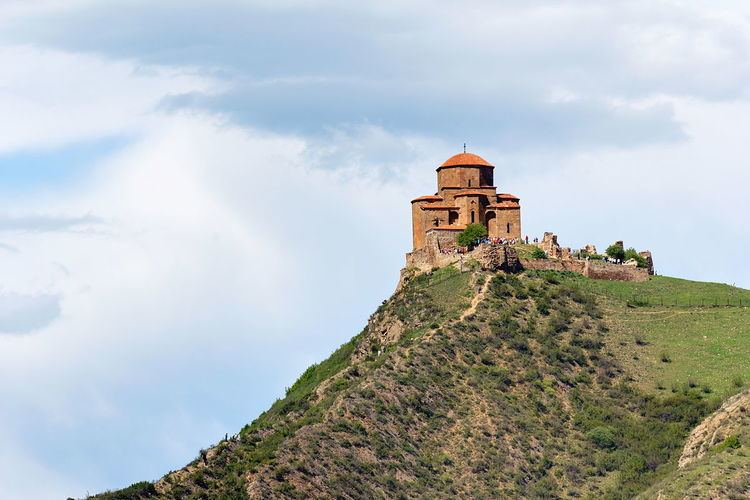Location Mtskheta, Georgia Architectural type Church Criteria iii, iv Address Georgia Completed 605 AD | Affiliation Georgian Orthodox Type Cultural Designated 1994 (18th session) Phone +995 555 34 64 38 Architectural style Tetraconch | |
 | ||
Hours Open today · Open 24 hoursThursdayOpen 24 hoursFridayOpen 24 hoursSaturdayOpen 24 hoursSundayOpen 24 hoursMondayOpen 24 hoursTuesdayOpen 24 hoursWednesdayOpen 24 hours Similar Svetitskhoveli Cathedral, Ananuri, Narikala, Samtavro Monastery, Bodbe Monastery | ||
Jvari Monastery (Georgian: ჯვრის მონასტერი) is a sixth century Georgian Orthodox monastery near Mtskheta, eastern Georgia. Along with other historic structures of Mtskheta, it is listed as a World Heritage site by UNESCO.
Contents
History
Jvari Monastery stands on the rocky mountaintop at the confluence of the Mtkvari and Aragvi rivers, overlooking the town of Mtskheta, which was formerly the capital of the Kingdom of Iberia.
According to traditional accounts, on this location in the early 4th century Saint Nino, a female evangelist credited with converting King Mirian III of Iberia to Christianity, erected a large wooden cross on the site of a pagan temple. The cross was reportedly able to work miracles and therefore drew pilgrims from all over the Caucasus. A small church was erected over the remnants of the wooden cross in c.545 named the "Small Church of Jvari".
The present building, or "Great Church of Jvari", is generally held to have been built between 590 and 605 by Erismtavari Stepanoz I. This is based on the Jvari inscriptions on its facade which mentions the principal builders of the church: Stephanos the patricius, Demetrius the hypatos, and Adarnase the hypatos. Professor Cyril Toumanoff disagrees with this view, identifying these individuals as Stepanoz II, Demetre (brother of Stepanoz I), and Adarnase II (son of Stepanoz II), respectively.
The importance of Jvari complex increased over time and attracted many pilgrims. In the late Middle Ages, the complex was fortified by a stone wall and gate, remnants of which still survive. During the Soviet period, the church was preserved as a national monument, but access was rendered difficult by tight security at a nearby military base. After the independence of Georgia, the building was restored to active religious use. Jvari was listed together with other monuments of Mtskheta in 1994 as a UNESCO World Heritage Site.
However, over the centuries the structures suffered damage from rain and wind erosion and inadequate maintenance. Jvari was listed in the 2004 World Monuments Watch list by the World Monuments Fund.
Architecture
The Jvari church is an early example of a "four-apsed church with four niches" domed tetraconch. Between the four apses are three-quarter cylindrical niches which are open to the central space, and the transition from the square central bay to the base of the dome's drum is effected through three rows of squinches. This "four-apses four-niches" church design is found in the architecture of Georgia, Armenia, and Caucasian Albania, and is often referred to as a "Hripsime-type plan" after its best known example, the church of St. Hripsime in Armenia. The Jvari church had a great impact on the further development of Georgian architecture and served as a model for many other churches.
Varied bas-relief sculptures with Hellenistic and Sasanian influences decorate its external façades, some of which are accompanied by explanatory inscriptions in Georgian Asomtavruli script. The entrance tympanum on the southern façade is adorned with a relief of the Glorification of the Cross, the same façade also shows an Ascension of Christ.
Uncertainty over, and debate about, the date of the church's construction have assumed nationalist undertones in Georgia and Armenia, with the prize being which nation can claim to have invented the "four-apsed church with four niches" form.
Threats
Erosion is playing its part to deteriorate the monastery, with its stone blocks being degraded by wind and acidic rain.
